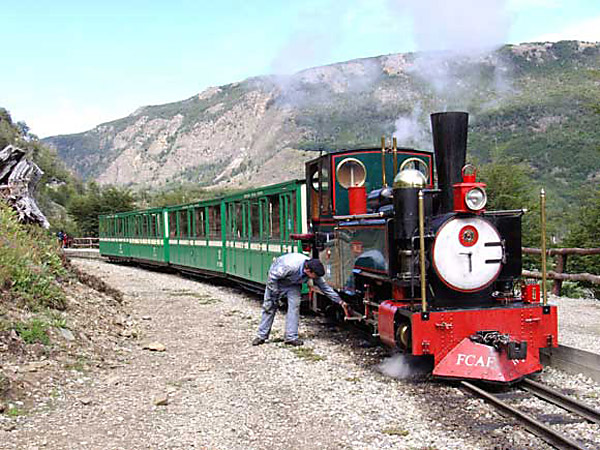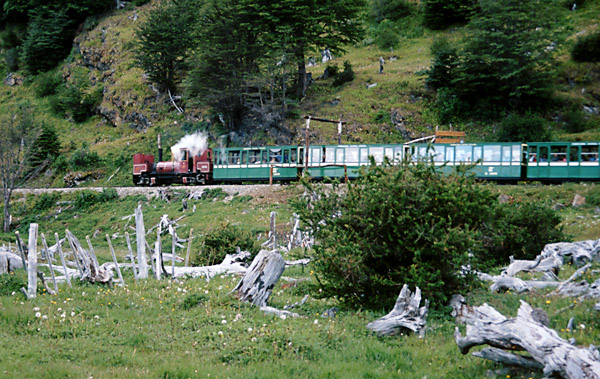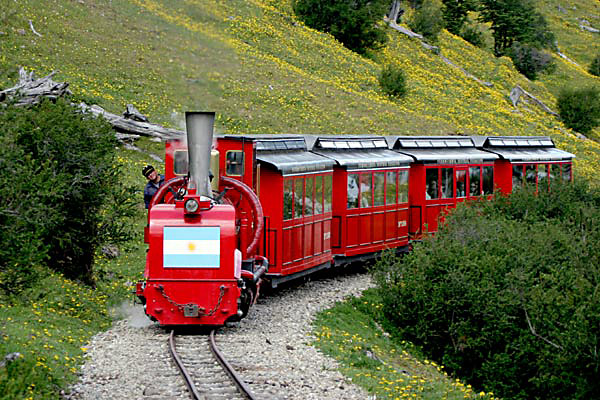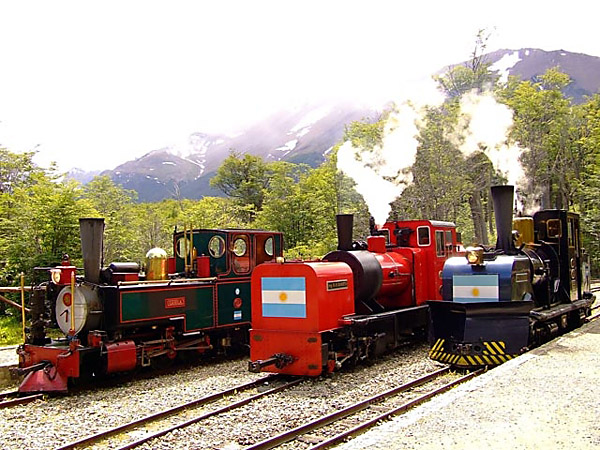 |
|||||||||||||||
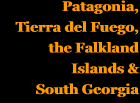 |
|||||||||||||||
 |
|||||||||||||||
 |
|||||||||||||||
The 'End of the World Line'
Garratt No.2 'Nora', as it then was, coasts back down through the national park on the 1st January 2001. During the mid 1990s part of the prison railway trackbed was rebuilt and reused re-used for a 50cm. gauge tourist line known as 'The end of the world train,' or more officially the Ferrocarril Austral Fueguino. This is operated by Tranex Turismo SA of Buenos Aires. New steam locos were provided for the line, namely an 0-4-0 + 0-4-0 K1 Garratt lookalike built in Buenos Aires, and a 2-6-2T in 'Lynton & Barnstable' style ('Camila'), built by Winson Engineering in the UK. There were also regauged Ruston and O&K diesels. This railway very quickly developed from being an almost miniature railway, along the lines of 15 inch gauge tourist railways in the UK, to a much heavier-duty narrow gauge railway, which perhaps would have been better constructed to a slightly wider gauge. The history of the line's development over the last fifteen years or so is largely the saga of how it has coped with steadily increasing traffic and how its equipment and infrastructure have changed to suit its new role. This line has its own website in English, Portuguese and French as well as Spanish. The changing nature of the railway has been driven by the rapid increase in tourism in Ushuaia, particularly as cruise ships visiting Antarctica have made the town an integral part of their itinerary. The company's response, however, has been largely due to the imagination, skills and interests of Señor Shaun MacMahon, who was Technical Manager of the railway from 1999 to 2004 and is still involved on an advisory basis. A biography of Mr. McMahon is available in Martyn Bane's steam development website. Shaun McMahon has himself summed up the stages of the railway's growth as being: To clarify the enormous challenge that has faced the FCAF management and staff over the last fifteen years it is only necessary to point out that the original 'miniature' railway could cope with perhaps 15,000 passengers per year. A decade and a half on and the same railway is heading towards passenger numbers of almost ten times that figure! The route A view within the Estación Fin del Mundo after its recent remodelling. The gentleman on the left is dressed in the prison garb that will be familiar from the earlier pages in this chapter!
There has been a long-standing proposal to extend the railway back into the centre of Ushuaia. Whilst this made good economic sense it has been superseded by the rapid expansion of the town in recent years. New Garratt loco Ing. H. R. Zubieta waits at the head of its train for a departure to Parque Nacional. The backdrop gives some idea of the scenery around the principal station. October 2010.
The site also includes a carriage shed with small historic display. This is accessed by a sector table (like a turntable but pivoted at one end and only moving through a small angle). Once away from the station the trains run alongside the Rio Pipo, partly on a new alignment as much of the old Presidio trackbed has been washed away. Occasionally lines of old sleepers show where the prison locos used to operate and everywhere there are old tree stumps - relics of hard labour! Seldom can such a short trackbed have so many stories to tell. Locomotive no. 5 crosses the Puente Quemado in November 2006.
Locos are usually working hard here on the outward run as the steep Macarena bank starts almost immediately after the bridge. This is at about 1 in 30 and is the steepest section on the line.
At the top of the bank is La Macarena station, where trains stop for fifteen minutes or so. The Macarena cascades are nearby and a small exhibition showing how the original indigenous population lived. In this photo most of the passengers have gone off to visit the attractions at Macarena. Camila, in this undated photo, has received her Lempor exhaust with its large chimney, and various other modifications, but the train is made up of the early stock.
To those used to the rest of Patagonia, southern Tierra del Fuego is remarkably green. This train huled by no. 2 Nora in early 2001, has gathered its passengers and continues alongside the river towards the national park boundary.
The same locomotive, no. 2, Ing. L. D. Porta, but three years later after its radical rebuild, heads a train of newer coaches west of Estación La Macarena during 2004.
The upper part of the route runs alongside some wonderful examples of raised peatbog, eventually arriving at the terminus. Some passengers will walk on into the park, and return later. Railway enthusiasts might well wish to explore some of the old forestry railway trackbeds. The railway's three steam locos, nos. 3, 5 and 2, are seen together at the outer terminus, Parque Nacional.
Infrastructure Operating Macarena bank provides the main constraint on the hauling power of the locos. 'Nora' for example in original form could take seven bogies up the bank. 14-1-12 |
|||||||||||||||
Main pages
Chapter 10
The Ushuaia prison railway & the FCAF



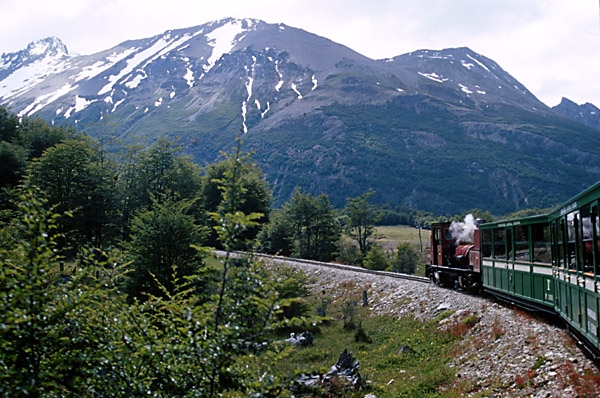
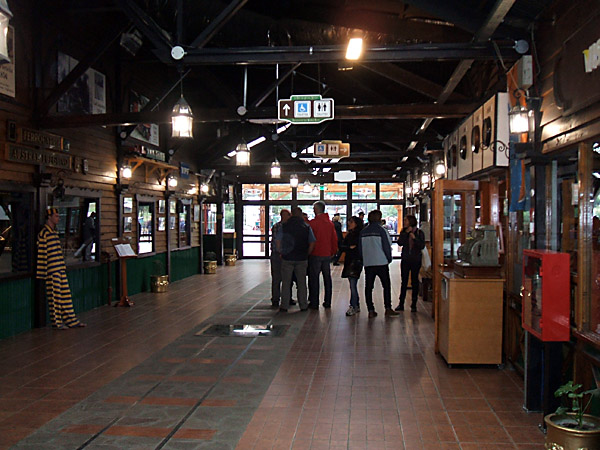
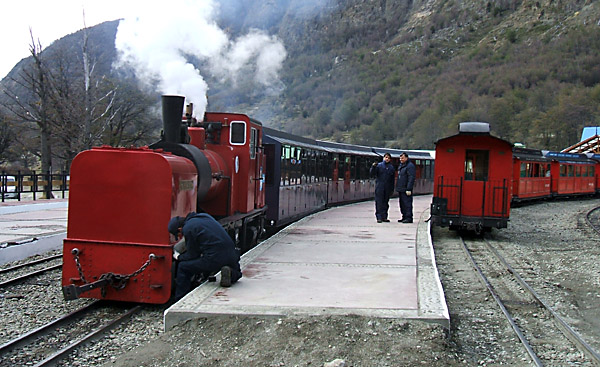
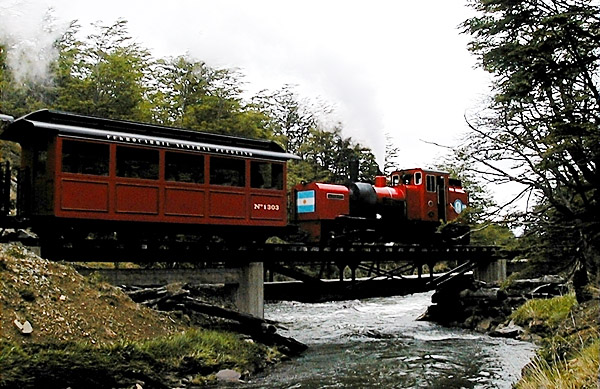
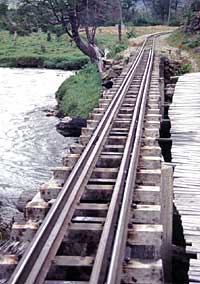 The line crosses the river at Puente Quemado. This is a new bridge but on the old alignment. A lower level footbridge is on the right.
The line crosses the river at Puente Quemado. This is a new bridge but on the old alignment. A lower level footbridge is on the right.